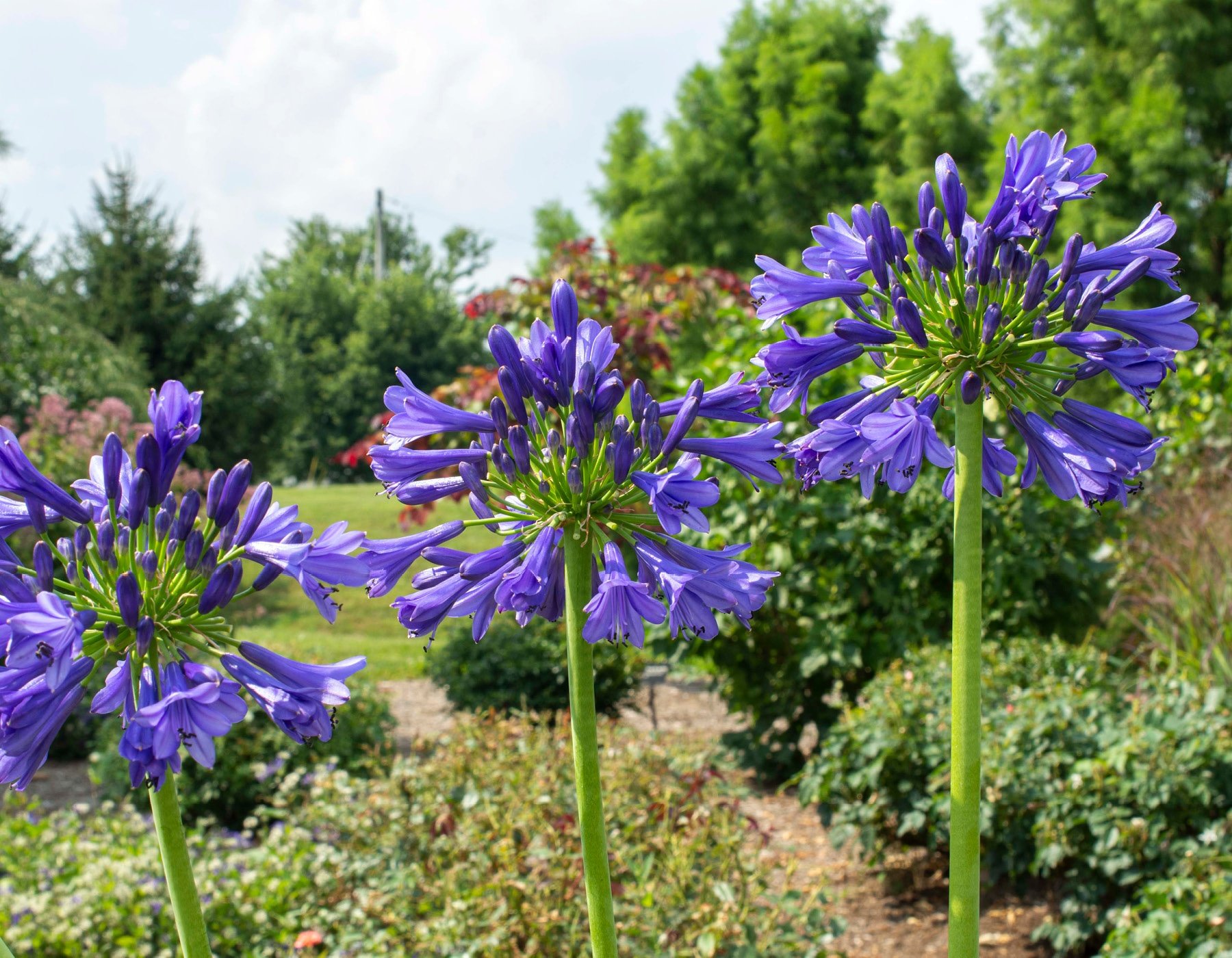How to Plant and Maintain Agapanthus in Your Yard
Grasping the Art of Agapanthus Treatment: Vital Actions for Healthy Growth and Dynamic Flowers
In the world of gardening, the farming of agapanthus stands as a fulfilling venture for those who look for to support these classy flowering plants. With their striking flowers and stylish foliage, agapanthus has recorded the attention of garden enthusiasts worldwide. However, accomplishing optimal growth and vivid blooms calls for a nuanced approach that incorporates numerous important steps. From picking the right selection to mastering pruning strategies, the trip in the direction of growing thriving agapanthus plants is diverse and holds the key to unlocking the complete capacity of these organic treasures.

Picking the Right Agapanthus Variety

When selecting the best Agapanthus range for your garden, consider aspects such as climate viability, bloom shade, and growth practice. Agapanthus, commonly known as Lily of the Nile or African lily, can be found in a selection of shades varying from tones of purple and blue to white. Choose a bloom shade that complements your existing garden palette to develop an unified landscape. Furthermore, consider the environment in your area to make certain the Agapanthus selection you select can prosper in your specific conditions. Some ranges are more forgiving of chilly temperature levels, while others favor warmer climates. Recognizing the growth habit of different Agapanthus varieties is critical for appropriate positioning within your garden. Some varieties have a clumping growth behavior, ideal for containers or boundaries, while others have an even more spreading nature, appropriate for ground cover or mass growings. By thoroughly assessing these aspects, you can choose the best Agapanthus range to enhance the charm of your yard.
Suitable Planting Conditions
Considering the optimal environmental demands is crucial for effective Agapanthus growing. Agapanthus plants are delicate to cold temperatures and need to be secured from frost throughout wintertime months.
To make certain healthy development and vivid blossoms, plant Agapanthus light bulbs at a deepness of about 2-4 inches and room them 8-12 inches apart. Adding organic matter, such as compost, to the dirt can boost drain and fertility, promoting robust root development. Mulching around the base of the plants aids keep wetness and subdues weed growth. Routine watering is vital, specifically throughout the expanding season, to maintain the dirt regularly moist yet not saturated.
Watering and Fertilizing Tips
Preserving proper dampness levels and giving essential nutrients are crucial elements in the treatment routine for Agapanthus plants. When it concerns sprinkling Agapanthus, it is essential to strike a balance. If overwatered, these plants choose continually damp navigate here soil but are at risk to root rot. Throughout the expanding season, water deeply as soon as a week, ensuring the soil is well-draining to avoid waterlogging. In hotter climates or throughout durations of drought, more constant watering may be required to keep the soil equally wet. Nevertheless, lower watering in the winter season to stop waterlogged problems.
Feeding Agapanthus is important for advertising healthy and balanced growth and prolific blossoms. Use a well balanced fertilizer, such as a 10-10-10 formula, in the very early spring as brand-new growth arises. Repeat this application every 6-8 weeks throughout the expanding period. Avoid extreme fertilization, as it can bring about rich foliage at the expenditure of flowers. Constantly comply with the supplier's instructions for proper dilution and application methods. By complying with these watering and feeding ideas, you can guarantee your Agapanthus plants prosper and produce dynamic, durable blossoms.
Pruning Strategies for Agapanthus
Trimming Agapanthus plants at the proper times and with proper methods is critical for preserving their health and advertising optimal growth and flowering. The ideal time to prune Agapanthus is in late winter season or very early springtime prior to new development arises.
For flowered stems, wait till the blossoms have withered and afterwards cut them back to the base. This not just my review here cleans the plant's appearance but additionally encourages the growth of brand-new blossom buds. Deadheading spent flowers can also reroute the plant's power into generating more blossoms instead of establishing seeds. However, if you wish to gather seeds for proliferation, leave some flowers to dry and fully grown on the plant.
Keep in mind to utilize tidy, sharp tools to make accurate cuts and minimize the danger of presenting illness. Agapanthus. Routine trimming will certainly help keep your Agapanthus looking neat and healthy while ensuring a bountiful display of stunning blossoms
Managing Usual Bugs and Conditions
After making sure proper trimming strategies for Agapanthus, it is vital to attend to usual bugs and diseases that can influence the health and vitality of these plants. One typical bug that impacts Agapanthus is the Agapanthus gall midge.
Additionally, Agapanthus plants can endure from root rot if they are planted in inadequately draining soil. By being attentive and taking punctual activity against pests and illness, you can aid your Agapanthus plants flourish and generate lively blossoms. Agapanthus.

Verdict
Finally, grasping the art of agapanthus care includes selecting the ideal range, offering suitable planting conditions, proper watering and feeding, appropriate pruning techniques, and dealing with common insects and illness. By following these important steps, you can ensure healthy and balanced development and vivid blooms for your agapanthus plants. Remember to consistently keep an eye on and preserve your plants to advertise their general health and long life.
To make certain healthy and balanced growth and dynamic blooms, plant Agapanthus light bulbs at a depth of regarding 2-4 inches and space them 8-12 inches apart. By complying with these watering and fertilizing tips, you can ensure your Agapanthus plants grow and create dynamic, long-lasting flowers.
One common parasite that affects Agapanthus is the Agapanthus gall midget. In addition, Agapanthus plants can experience from origin rot if they are planted in inadequately draining pipes soil. By adhering click reference to these essential steps, you can ensure healthy development and vivid blossoms for your agapanthus plants.